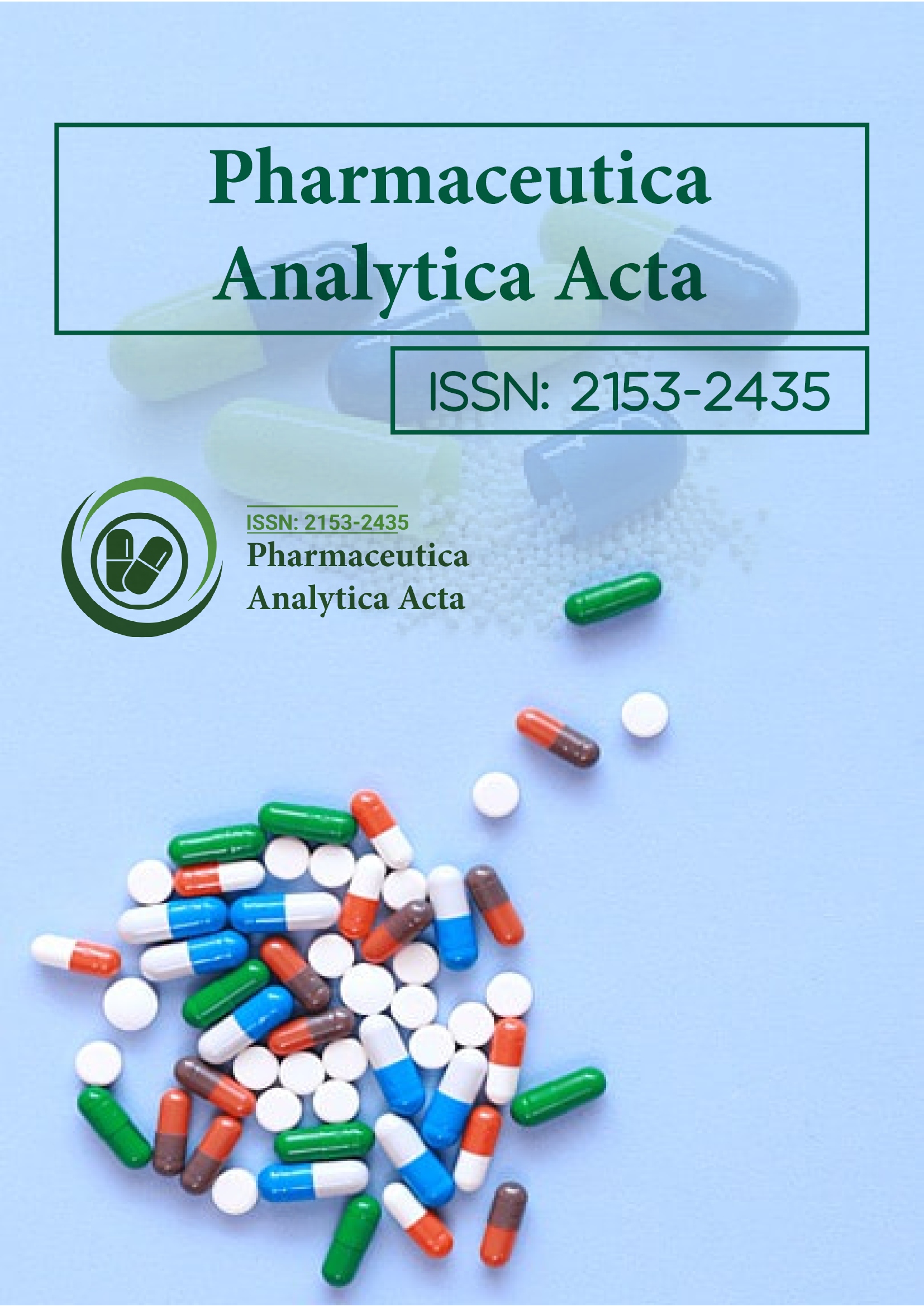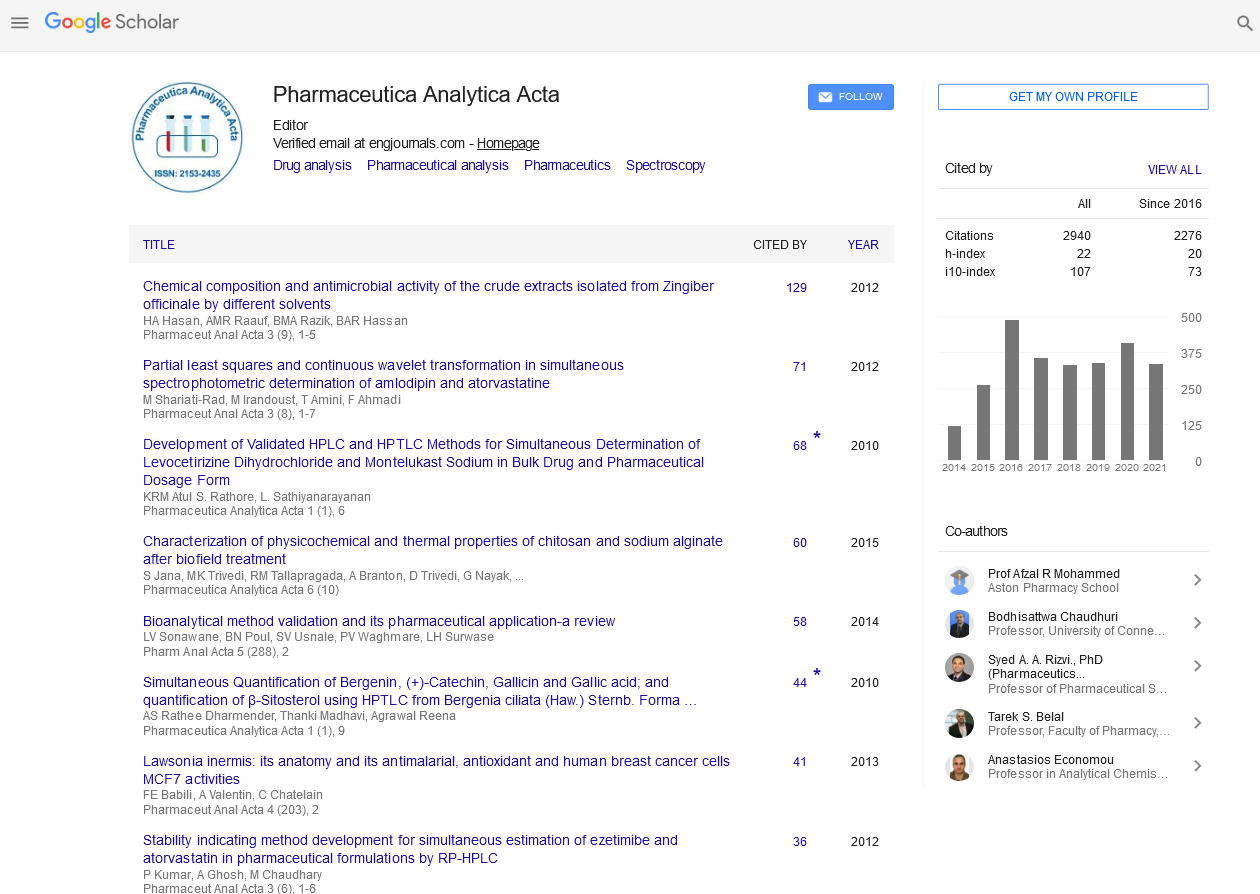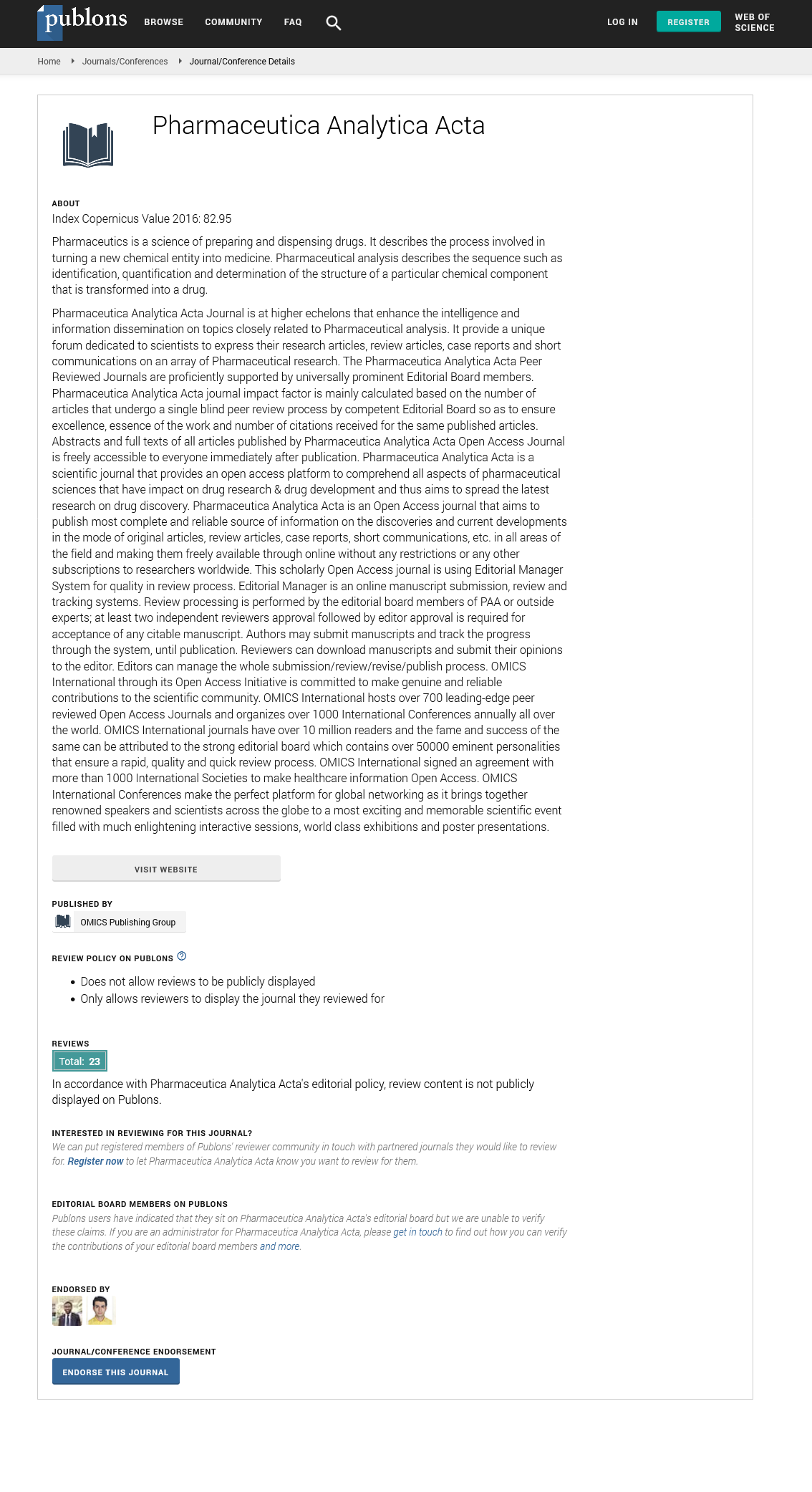Indexed In
- Open J Gate
- Genamics JournalSeek
- Academic Keys
- JournalTOCs
- The Global Impact Factor (GIF)
- China National Knowledge Infrastructure (CNKI)
- Ulrich's Periodicals Directory
- RefSeek
- Hamdard University
- EBSCO A-Z
- OCLC- WorldCat
- Publons
- Geneva Foundation for Medical Education and Research
- Euro Pub
- Google Scholar
Useful Links
Share This Page
Journal Flyer

Open Access Journals
- Agri and Aquaculture
- Biochemistry
- Bioinformatics & Systems Biology
- Business & Management
- Chemistry
- Clinical Sciences
- Engineering
- Food & Nutrition
- General Science
- Genetics & Molecular Biology
- Immunology & Microbiology
- Medical Sciences
- Neuroscience & Psychology
- Nursing & Health Care
- Pharmaceutical Sciences
Opinion Article - (2025) Volume 16, Issue 2
Chromatographic Techniques in Drug Analysis
Oliver Reynolds*Received: 31-May-2025, Manuscript No. PAA-25-30217; Editor assigned: 02-Jun-2025, Pre QC No. PAA-25-30217; Reviewed: 16-Jun-2025, QC No. PAA-25-30217; Revised: 21-Jun-2025, Manuscript No. PAA-25-30217; Published: 30-Jun-2025, DOI: 10.35248/2153-2435.25.16.815
Description
Chromatography has long served as one of the most dependable and adaptable analytical tools in the pharmaceutical sciences. From the discovery of new compounds to the quality testing of finished medicines, it continues to be indispensable for identifying, separating and quantifying components in complex mixtures. The method allows scientists to distinguish and measure substances that are chemically similar yet require clear differentiation to ensure drug purity, stability and safety. Highperformance liquid chromatography, gas chromatography and thin-layer chromatography represent the most frequently employed chromatographic techniques in pharmaceutical analysis. Each method operates on the same fundamental principle of separation based on differential interactions between analytes, a stationary phase and a mobile phase. The selection of the appropriate system depends on the physical and chemical properties of the target compounds and the matrix in which they are found. Whether analyzing small molecules, excipients, or impurities, the flexibility of chromatographic approaches ensures that nearly every analytical challenge can be addressed through suitable optimization.
Developing an effective chromatographic method involves several stages. Scientists must choose the stationary phase carefully, ensuring that its chemical characteristics match the analyte’s polarity and functional groups. The mobile phase composition is then optimized to achieve sufficient resolution between closely related substances, such as isomers or degradation products. Gradient elution strategies are often tested to improve separation efficiency and shorten analysis time. Parameters such as column length, internal diameter, temperature and flow rate require systematic evaluation to deliver reproducible and reliable results. In addition, detector selection whether based on ultraviolet absorption, fluorescence, refractive index, or mass detection plays a crucial role in sensitivity and specificity. One significant application of chromatography in the pharmaceutical sector is impurity profiling. Every pharmaceutical substance may contain unwanted chemical entities resulting from synthesis, degradation, or interaction with excipients. Even trace impurities must be identified and quantified accurately because they can influence a product’s therapeutic effect and safety profile. Impurity studies rely on the ability of chromatographic techniques to separate the main drug substance from its byproducts. Investigators typically perform forced-degradation experiments by exposing the drug to stress conditions such as heat, light, humidity, or oxidation. The resulting degradation products are then isolated and characterized through chromatographic methods combined with spectroscopic techniques. These data assist manufacturers in establishing appropriate shelf-life and storage recommendations.
Chromatography also supports the validation of analytical methods that are required by regulatory authorities before a drug can be released for commercial use. Validation ensures that each procedure is suitable for its intended purpose and produces consistent results under specified conditions. During validation, scientists examine performance parameters including linearity, precision, accuracy, detection limits, quantitation limits and sample stability. Studies often include the assessment of matrix effects, system suitability and carry-over to confirm that analytical results are free from interference. Once validated, these methods are used routinely in quality control laboratories to evaluate the composition and purity of production batches.
Advancements in chromatographic instrumentation have contributed to faster, more sensitive and more efficient analysis. Ultra-high-performance liquid chromatography systems, for example, employ columns with smaller particle sizes and operate at higher pressures, allowing for shorter analysis times without compromising resolution. These modern systems have become especially valuable in environments where large numbers of samples must be processed quickly, such as quality control laboratories or stability-testing facilities. The increased sensitivity achieved through these systems makes it possible to detect extremely low concentrations of impurities or degradation products that might previously have gone unnoticed.
Another major development involves the integration of chromatography with mass spectrometry. This combined approach enhances analytical specificity and provides structural information about unknown compounds detected in a chromatographic run. The mass spectrometer serves as a detector that not only measures the amount of each component but also helps identify its molecular structure. Such coupled systems are widely used for confirming the identity of drug substances and impurities, particularly when dealing with complex mixtures or unknown degradants. Beyond routine quality control, chromatographic methods are indispensable in research and development. During drug discovery, chromatography assists in characterizing new chemical entities and monitoring reactions during synthesis. In formulation development, it aids in determining compatibility between active pharmaceutical ingredients and excipients. Chromatography is also valuable in dissolution and stability testing, ensuring that finished products maintain their intended potency and performance over time. In bioanalytical applications, it enables the quantification of drugs and their metabolites in biological fluids, supporting pharmacokinetic and toxicological evaluations.
The growing emphasis on green chemistry has inspired scientists to refine chromatographic processes to minimize solvent use and waste generation. Modern laboratories are exploring water-based mobile phases, smaller column dimensions and alternative stationary materials to reduce environmental impact while maintaining analytical quality. These eco-friendly practices not only lower costs but also contribute to sustainability in pharmaceutical research and production. Despite the evolution of newer analytical technologies, chromatography remains a fundamental tool because of its unmatched combination of versatility, accuracy and reproducibility.
Citation: Reynolds O (2025). Chromatographic Techniques in Drug Analysis. Pharm Anal Acta. 16:815.
Copyright: © 2025 Reynolds O. This is an open-access article distributed under the terms of the Creative Commons Attribution License, which permits unrestricted use, distribution and reproduction in any medium, provided the original author and source are credited


